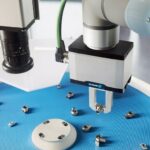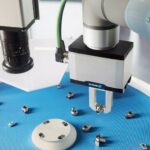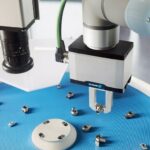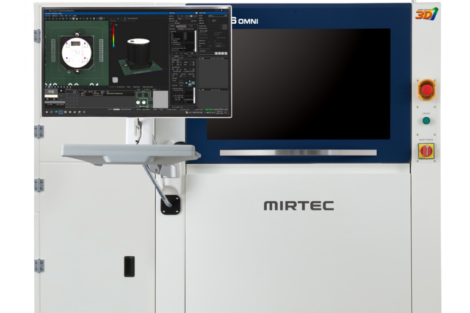Gripping technology specialist Schunk has introduced a 2D Grasping-Kit which allows companies to easily automate their gripping and sorting tasks. Thanks to offline AI support and a simple user interface, no skilled personnel is required for setup, teaching and operation.
All manufacturing companies face the same challenge: how to maintain or even expand cost-effective and efficient production with the same number of employees? Staff shortages have become the norm in all industries. Companies want to automate more stages of production, especially physically demanding or monotonous tasks.
Today, however, small and medium-sized companies in particular are struggling with staff shortages that prevent them from automating their production. They face a particular challenge when it comes to the handling of components by robots. When a camera system is necessary to achieve precise positioning for component gripping, many encounter limitations and must rely on external service providers for automation.
The 2D Grasping-Kit
To counter this, Schunk has introduced the 2D Grasping-Kit, an application kit that enables swift, and straightforward automation thanks to AI developed by the company in Germany. The kit consists of a camera with a lens, an industrial PC, the company’s AI software and the necessary cables. All components are coordinated and, thanks to an open TCP/IP interface, can be combined with any robot or even a higher-level controller (such as a Siemens PLC). It allows handling and sorting of various components randomly arranged on a plane.
When turned parts come out of a machine in a contract manufacturing company, they usually fall into a box. An employee then sorts them by hand and places them in trays in the correct position so that subsequent processing steps can be automated more easily. However, during this process, it is easy for components to be damaged or mixed up. When the robot takes over, the employee is relieved of these tasks. At the same time, complexity and susceptibility to errors are reduced.
Step 1: Photograph components
The camera looks down onto a conveying belt, tray or staging table from above. The AI software recognizes and differentiates the components based on previously trained images and outputs the optimal gripping position. To do this, the camera first captures the background on which the components will be placed. It then takes several photographs of the parts to be gripped. For example, if the robot‘s task is to grip components along with transparent packaging (such as screws and nuts in a plastic bag) for order fulfillment, the operator simply takes multiple photos of the components in various positions.
Lighting is an often underestimated challenge for camera-based automation systems. Depending on the installation site, selecting a suitable exposure can be difficult, especially since a number of different parameters must be considered (such as size, distance, wavelength or beam angle). The 2D Grasping-Kit does not require a dedicated lighting source and, thanks to AI-powered software, is significantly more resistant to ambient light than conventional vision systems. The camera is designed to handle varying lighting conditions, including daylight changes based on the sun‘s position, and is also capable of adapting to different backgrounds. The color and reflectivity of the surface have minimal impact as well. The system reliably detects metallic components even on bright backgrounds.
Step 2: Define objects and gripping points
In the next step, the operator simply marks and names the components. The AI software automatically extracts the object‘s contour from the background, isolates it and calculates variances for view angles, lighting conditions and other parameters. After only 10 to 20 images, the software already has a sufficient data set of the objects to be detected.
Step 3: Train the AI and get started
Once the first two steps have been completed, the AI trains itself entirely offline. The customer retains full control over the data at all times because it remains entirely within their company network. The training takes just one to two hours. Then the 2D Grasping-Kit is ready to go.
The AI-assisted camera now recognizes the components in the bags based on characteristic features such as shape, size and color. The AI adjusts and compensates for any variations that may occur, such as reflections or deformations of the bags. The image processing software then communicates with the robot and tells it which components it recognizes, where they are positioned, how far the gripping system should be opened (in the case of parallel grippers) and at which angle of rotation it can best grip the components. The robot then moves its gripper to the component, picks it up, and places it in the correct position at a predefined location. During the gripping and moving process, the camera simultaneously detects the next object and calculates its type and gripping point. This takes about two seconds, enabling the robot to immediately grip the second object after it has put down the first.
What sets this system apart is that it not only detects objects but also automatically calculates the gripping points for the specific gripper being used. In addition, it transfers the parameters, such as angle of rotation and opening width, to the robot control system. If desired, users can manually store multiple gripping points very easily. In this example, the 2D Grasping-Kit works with the universal gripper EGK. In the future, the kit will also work with pneumatic and mechatronic parallel grippers, as well as magnetic, vacuum and adhesive grippers.















